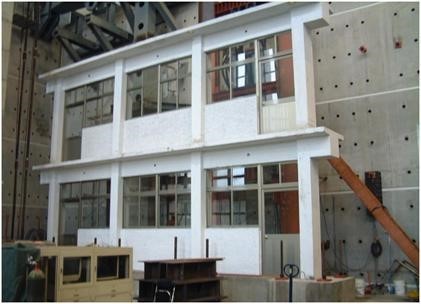Structural / Materials Engineering
Structural and Material Engineering is always one of the most important areas in civil engineering. Its main research activities include the analysis and design of civil structures such as buildings, bridges, dams, and towers. Since the founding of the Department of Civil Engineering in 1918, professors with structural expertise have been teaching and researching in the structural engineering area. In order to promote the internationalization of the structural and material engineering group, we also recruit international Masters and PhD students, mainly from Southeast Asia. The number of fulltime staff members also grows annually. Currently, we have 9 professors, with expertise in all areas related to structural and material engineering.



The content of the courses includes advanced theory of mechanics of structures and materials, analysis and design of structures, evaluation and strengthening of seismic capability and durability of structures, etc. the teaching stresses on both theory and practice and is implemented with computer software. The objective of teaching is to cultivate engineers with professional knowledge and practical capability, and to help them establish the pursing further education and self-learning.
Our department remains in a leading position in academic research in the structural engineering area, especially in the area of structural seismic evaluation and retrofitting. We established many official certification seismic-evaluation-systems and retrofitting manuals in both steel and reinforced concrete structures. The development environment of civil engineering gradually changes, due to the fact that Taiwan has become one of the developed areas. The research interests of the department in structural engineering and materials are adapted to meet the demands of society. In addition, because Taiwan is located in the Pacific Rim earthquake belt, most of the structural design is constrained by the earthquake threats. Therefore, research into building resistance to earthquakes is always a major research project for the structural engineering group. In the future, more effort will be put into this area. Our aim is to seek strategies that reduce the harm of the earthquake and provide a safe homeland. Apart from university funds, the financial funds of the group come from the Ministry of Science and Technology Assistant Project, Government Projects, and Industry Cooperated Projects. Generally, funding levels are sufficient.
The research areas of laboratories are divided into traditional research areas and future research areas, including:
- Structural Theory Analysis: Wave dynamics, Vibration and Noise, Computational Mechanics, Nonlinear Mechanics, Structural Reliability Analysis.
- Earthquake Engineering and Earth-resistance Analysis: Structural Dynamics, Scattered Vibration, System Identification, Building Earthquake-resistant Design Analysis, Bridge Earthquake-resistant Design Analysis.
- Large-scale Structure Earthquake-resistance Experiment: Concrete Structure Earthquake-resistant Experiment and Test, Composite Structure Earthquake-resistant Experiment and Vibration Experiment, and Energy Dissipation Structure Vibration Table Experiment.
- Engineering Material: Concrete Mechanics, Concrete Material and Experiment, Material Composition.
- Structure Performance Design Regulation Research: Building Earthquake resistance Design Regulation Research, Bridge Earthquake-resistant Design Regulation Research, Building Durability Design Regulation Research, Bridge Durability Design Regulation Research.
- Structure Life Cycle Design Research: Building Earthquake-resistant & Durable Life Cycle Design and Maintenance Strategy Research, Public Facilities.
- Structure Safety Evaluation and Reinforcement: Building Earthquake Capacity Evaluation and Retrofit, Bridge Capacity Evaluation and Retrofit.
- Innovative Engineering Material Research: High-performance Concrete Material Research, Composite Structure Material Research.
- Structure Health Diagnostics and Control: Smart Structure Automatic Monitory System, Smart Structure Control System, and Applications in Structure Health Diagnostics.